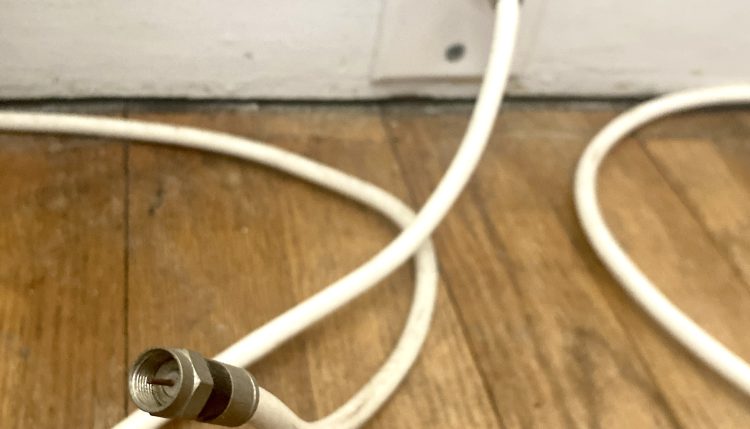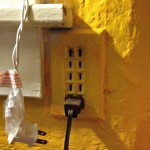There are plenty of bad design choices out there. All you have to do is gawk at a site like Bad MLS Photos or even just walk around Quincy --…

Are you seriously still paying for cable TV?
There is simply no need to be forking over $200 a month for cable TV in the year 2023. It’s a waste of both money and mind. Afraid to quit cable? I’d wager half of what you watch isn’t even on television anymore, but on a streaming service like Netflix or Disney+.
Need further motivation? If you’ve been paying for a standard cable TV package for the past five years, you’ve basically donated about $100 to Fox News, whether you’ve ever watched the channel or not. The way the cable TV business model works, only about half of your monthly bill goes to the provider (Xfinity, RCN, FiOS, etc.), while the other half is divvied up between the various channels, whether or not you ever watch them: an astonishing $7+ a month goes to ESPN, and stations like Fox News, TNT, USA, and CNN collect about $1-$2 apiece.
How’s that feel? If you’re not loving the sensation of Sean Hannity’s sweaty palms reaching into your pockets and pulling out a couple of bucks every month, read on.
How to Cut the Cord and Quit Cable, Step by Step
We quit cable almost a decade ago, and haven’t looked back. The only thing I truly missed were Red Sox games — and for a while, I found a workaround that existed in a legal gray area. But now NESN has its own streaming service, so there’s truly no reason not to cut the cord. Here’s how to do it.
Step 1: Buy a digital antenna. Time was, everyone just had an antenna (aka bunny ears) hooked up to their TVs, capturing over-the-air transmissions for free. You can still do that — and now, those over-the-air transmissions are broadcast in high definition. You just need to get an HD antenna to receive them.
This is a really well-rated basic antenna that should do the job if you live within 20 miles of a major city or broadcasting hub; there are more expensive ones available if you live farther away or want to make sure you get great reception.
A digital antenna will get you live major-network TV — including ABC, NBC, CBS, FOX, PBS, CW, and more. That means you can still watch the Oscars live, for instance, as well as presidential debates, Saturday Night Live, and lots of football games. (Games on the NFL Network or ESPN are the exception.) There are tons of random channels, too, that just show syndicated reruns and old movies and stuff, and PBS offers a wide range of free stations, like PBS Kids (way better than Nick Jr, if you ask me) and PBS Create (full of cooking and how-to shows like This Old House).
Step 2: Get a Roku box (if you don’t already have a smart TV, Fire Stick, Chromecast, etc.). The Roku Express is only like $30, or you can get a Roku Ultra for $100. One of these hubs will just make it easy to manage your streaming channels. (It also allows you to search for shows and movies across all platforms, and you can find Roku channels that stream shows and old movies for free but with erratically placed commercials. Or you can just buy or rent those movies without the ads, of course, through your Roku.)
Step 3: Keep Netflix (and whatever else you like). We have a Netflix and Disney+ subscription; we’ve had the former since its red envelope days, and Disney is well worth the fee if you have kids. We also keep a “floater” slot in our streaming rotation, mostly for the winter months, meaning we’ll sign up for Apple TV for a couple of months to watch the new season of Ted Lasso, for instance, and then cancel that and sign up for a month of Peacock or Paramount to binge a different show. We cancel the floater subscription as soon as we buy it basically, so it automatically shuts off after a month. (If that’s not an option, I set a reminder in my phone to cancel it in three weeks. Not just one reminder, but every other day for a week, to make sure I actually do it!)
Step 4: Get a Sling TV Orange package for $40/mo. if you still need some cable channels. Sling TV offers slimmed down cable bundles, so you can get, like, the family plan with all the ESPN, Disney, and Nickelodeon channels (as well as some staples like HGTV, History, Comedy Central, and others) without paying for any of the Fox News bullsh!t, which is good. Sling’s Orange package doesn’t come with NBC, for whatever reason, but if you have a digital antenna, that doesn’t matter.
If you’re a true TV addict, or don’t have a good user experience with Sling TV, you can try Hulu Live TV ($69) or YouTube TV ($73). These are similar live-stream options, but offer bigger, less customized bundles for more money — they’re basically like a normal cable bundle is now, with channels like the NFL Network and unlimited DVR recording. But, these also pay carriage fees to Fox News. Of the two, Hulu’s is a better deal at $69, as it comes with a Disney+ and Hulu subscription ($16/mo value combined).
Speaking of DVR: We have been cable-free long enough that we never got addicted to it, but if you use your DVR all the time you can actually buy your own box. Hulu and YouTube allow unlimited online DVR use, and Sling offers 50 hours of DVR storage.
Step 5: Quit cable, and downgrade to an internet-only plan. Now, your cable provider isn’t going to like this; they may even offer you a deranged limited-time package deal that includes cable and internet for less than the price of internet service alone. That’s because internet costs them next to nothing (they’re not paying for the content, and the cables are already running to your home) and their investors don’t like to see them hemorrhaging TV subscribers.
But, cable companies are increasingly getting used to this new reality and, with millions of Americans working from home more often, facing public pressure to offer reasonably-priced broadband service. If you’re able to shop around in your town, do so — most providers offer new-customer deals, so switching from Xfinity to FiOS (or at least saying you’re going to) or vice versa can potentially get you a fair price for a couple of years; just remember to factor in any installation or activation charges.
If your community, like ours, has only one provider, your options are admittedly limited; you probably won’t be eligible for any new customer deals since you’re already a customer (whether you like it or not). Just explain your situation, asking for the most affordable broadband service they offer, and try not to be upsold to a higher-priced internet service than you need. We still have 75mbps service — which used to be one of the fastest plans Xfinity offered, but is now one of the slowest — and it’s plenty fast, unless you have a big family that’s routinely streaming things on four or five different devices simultaneously.
Save money, save your mind
Listen, you like TV, I like TV. But TV likes us, too — it needs us to watch it. And it’s very good at getting what it needs. One show bleeds into the next, quite intentionally foisting itself upon you, and suddenly you realize it’s 1 a.m. and you’ve spent three hours watching vapid homebuyers discuss whether they can possibly live without a three-car garage or a fourth bathroom.
Since we quit cable for good — going on eight or nine years now — I find myself watching less TV overall, and watching better TV. There’s the tiniest bit of friction in searching for and selecting a streaming show, or selecting “Input 2” on the remote to watch live over-the-air TV, and that little bit of extra effort is typically enough to keep us from watching something just “because it’s on TV.”
We still watch the big live event shows, like the Oscars. We watch the most celebrated shows on TV, which are now mostly produced by streaming services, and old favorites like The Simpsons (on Disney) and Seinfeld (on Netflix). The stuff we find ourselves watching less of, though, is junk TV.
What do we do with those extra hours (because it really does add up to hours)? I write freelance articles and blog posts like this one; hell, I even wrote a whole book, mostly in the evenings. Gina and I talk about stuff, for hours, like a couple of college kids on a late-night road trip. Or we read books in quiet companionship. Sometimes we go to bed a little bit earlier, and wake up more rested.
You should try it.



